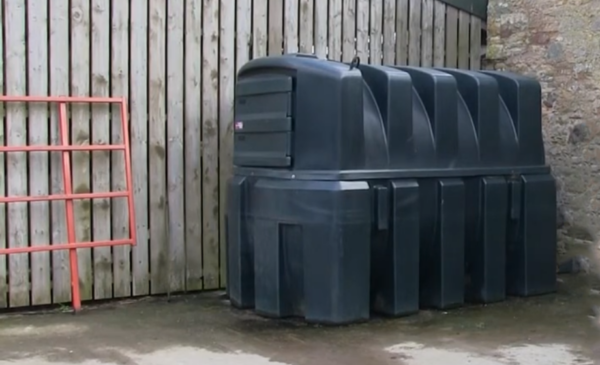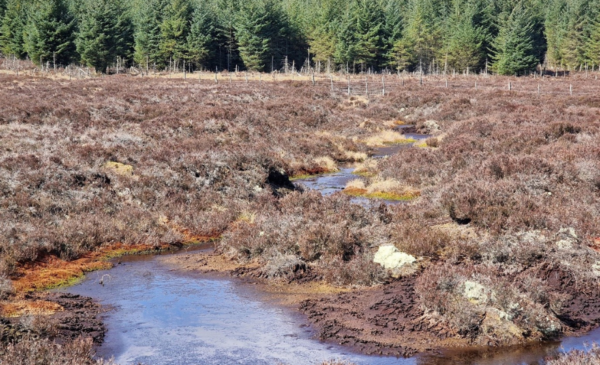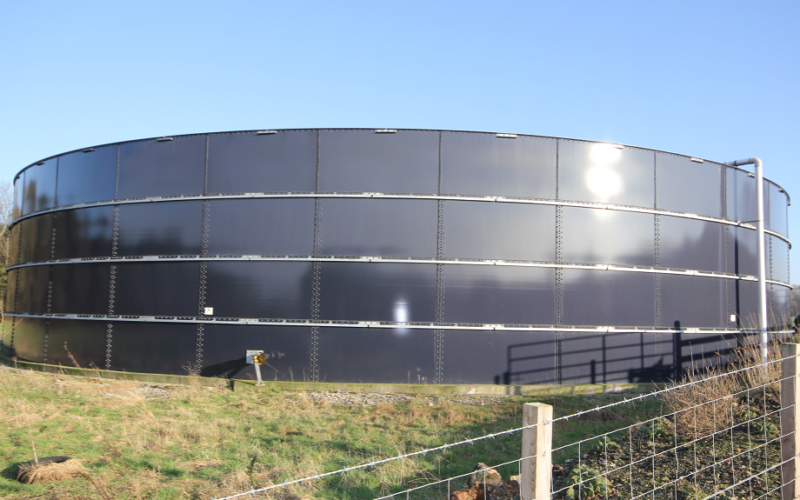2024 saw a fresh round of AECS funding for slurry storage, which has allowed a number of farmers across Scotland to build up their storage capacity to the required 22 weeks.
Now that so many farmers have an increased storage capacity, they have the opportunity to be more selective about how and when they apply slurry. This opens the door for slurry to be treated more like a valuable source of nutrients rather than a waste product that has to be spread out of necessity, regardless of conditions, temperature and crop demand. This will not only benefit the environment, but also the bottom line as it has the potential to significantly reduce the demand for purchased bag fertiliser.
The typical nutrient content of 1 m³ of slurry at 6 % DM (dry matter), as shown below, is 2.6 kg of N, 1.2 kg of P2O5 (phosphate), 3.2 kg of K2O (potash) and 0.7 kg of SO3 (sulphur).
Table 1 Typical Nutrient Content of a 6% DM Slurry (kg/m³)
| Total N | Total P2O5 | Total K2O | Total SO3 | |
| Kg/m³ | 2.6 | 1.2 | 3.2 | 0.7 |
| Kg in 30 m³ | 78 | 36 | 96 | 21 |
However, the percentage of the applied nutrients that can be utilised by the next crop varies depending on soil conditions, soil type, application method and timing. Typically, 50 % of the applied phosphate from slurry is taken up by the following crop. However, when planning your fertiliser applications, if the soil status is moderate or above target and your crop is one that shows a low yield response to phosphate, then you will use 100 % of the quantity when planning your fertiliser application rate. Factors that influence the phosphate availability from applications include, the soil pH (phosphate availability is low in acidic soils below 5.5), timing as the availability/mobility of phosphorus is less in colder conditions such as early spring when growth is just beginning and the soil type as soils with a higher PSC (phosphorus sorption capacity) class are more likely to lock-up applied phosphate.
On the other hand, it is estimated that 90 % of the applied potash is available to the next crop in the year of application. Sulphur is different again with an estimated availability of around 5-10 % in an autumn application which increases to as much as 35 % if applied in the spring. The percentage availability of the Nitrogen on a mineral soil where the slurry has been surface-applied would be 25 % between November and January, but this increases to 35 % for applications made between February and April.
Overall, a greater percentage of the nutrients are utilised by the crop if applied when the weather is warmer, and the crop is actively growing and has a demand to take up the nutrients. But what is the value of this? According to the AHDB fertilisers prices from November 2024, the price per kilo for each nutrient is as follows: 99 p per kg Nitrogen, 99 p per kg phosphate and 55 p per kg potash.
Table 2 Typical slurry nutritive values to the following crop based on a 6%DM slurry, surface applied to a mineral soil between February and April for a silage crop and the monetary savings that could be made through a reduction in demand for artificial fertiliser*.
| N | P2O5 | K2O | |
| Total Nutrients in 30m³/ha slurry application. | 78 kg | 36 kg | 96 kg |
| Percentage Availability in spring application | 35% | 50-100% | 90% |
| Monetary Value/ Potential Savings £/ha | £27.03 /ha | £17.82-£35.64 /ha | £47.52 /ha |
*Example based on specific conditions stated in caption. To find out the expected percentage utilisation for your farm based on your soil type, timing, application method and/or slurry analysis please seek further advice or consult technical note T736 (link at end of article)
The above table shows the potential savings that on spring application of slurry could represent. For land that receives multiple applications the savings could be even more significant. This illustrates the value of knowing what is in your slurry. The 10 % difference in the percentage utilisation of applied nitrogen between a winter application and a spring one equates to a reduction in value of £7.72 per ha per application which could quickly add up to £772 across a 100 ha farm, and that’s just nitrogen.
As well as increasing nutrient use efficiency and by extension your bottom line, applying slurry effectively also helps to reduce nutrient losses from runoff, leaching and volatilisation which has the added benefit of ensuring that slurry applications are less likely to have a detrimental impact on water quality and the wider environment.
Top tips:
- Analyse your slurry to find out its true nutrient value. You bring in a lot of imported N, P and K to your farm when you buy in feed (and straw) which is then circulated back to the land through the slurry, so you don’t then want to buy that N, P and K again in the form of bag fertiliser.
- Analyse your soils. Determining the nutrient statuses of your soils will help you target your slurry applications to the fields that will benefit from it most. If you identify high P and K statuses in some fields that’s likely an indication that they have historically received too much slurry, and you may benefit more from getting more of it spread further afield.
- Plan for the winter. Getting as much of your slurry out as possible when the crop benefits most, and having the maximum amount of storage available going into the winter will reduce the likelihood of being forced to spread slurry during periods when it is likely to lose much of its value and be more of an environmental risk due to run off or leaching.
A plan to calculate your projected slurry production over the housing period and a nutrient management plan to determine the rate, locations and timings of slurry applications can both be useful tools to help make the most of the value of your slurry. For more information, please visit the farm advisory service website. Funding is currently available towards the cost specialist advice for slurry and nutrient management planning and Technical note TN736 contains all the information you need to understand the nutrient value of your slurry applications.
Scottish Government funding is available for specialist advice which can include a soil & nutrient plan. Find out more from the Farm Advisory Service here.
The Farming and Water Scotland website hosts Know the Rules factsheets to help you comply with legislation. Additionally on the website you will find the PEPFAA Code where the Slurry and Manure section can aid you in planning and utilising this resource on farm.
Related resources

Oil Storage: How to ensure you stay safe
Andrew Wallace, SEPA
Fuel and oil are essential resources for the daily operations of farms across Scotland, but…

Remote sensing: can it help water management on farm?
Jack Zuill, SAC Consulting
Efficient water management is vital for both productivity and sustainability in agriculture. Scottish farmers face…

New Cross-Compliance Rules for Peatlands and Wetlands in Scotland
Jack Zuill, SAC Consulting
From 1 January 2025, new cross-compliance requirements under Good Agricultural and Environmental Condition (GAEC 6…

